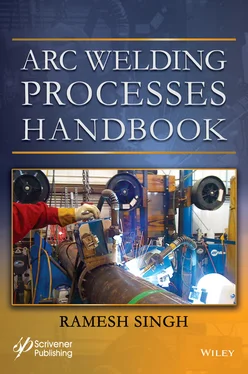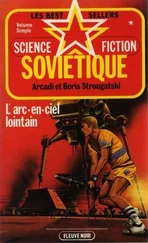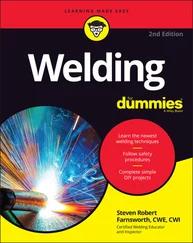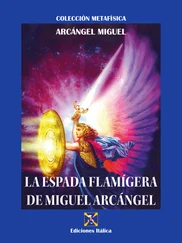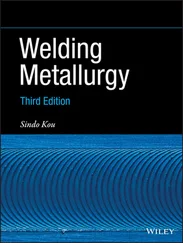1 Typical GTAW welding.Figure 3.3.2 A GTAW welder, note the welding torch, and the filler wire in each ...Figure 3.4.1 Typical GTAW welding process with details of the welding torch.Figure 3.5.1 A typical GTAW set-up with positions of gas cylinder, welding machi...Figure 3.5.2 The cleaning process by the current cycle.Figure 3.5.3 High and low frequency currents in pulsing.Figure 3.6.1 DC HF output circuit.Figure 3.7.1 The graph.Figure 3.7.2 Four AC wave forms.Figure 3.7.2.2 Effect of Independent AC amperage control on weld penetration and...Figure 3.7.2.3 Effect of variation in AC frequency on the weld profile and penet...Figure 3.7.2.4 Provides an example of a weld done at 150 Hz and 40 Hz.Figure 3.7.2.5 Weld profile as a result of extended EN of the cycle.Figure 3.7.2.6 Weld profile as a result of reduced EN cycle.Figure 3.7.4.1 A schematic drawing of single-phase DC power source with SCR brid...Figure 3.7.6.1 Schematic diagram of a DC generator.Figure 3.7.6.2 DC excitation circuit.Figure 3.9.1 Gas flow meters (A) shows the tube type flow meter, and the bottom ...Figure 3.10.1 A typical manual welding torch, note the water cooling, gas supply...Figure 3.10.2 Various nozzles types and sizes.Figure 3.10.3 A gas lens, with mesh, and holding circlip.Figure 3.10.4 An assortment of manual welding GTAW torch components.Figure 3.11.1 Electrode tips.Figure 3.11.2.1 The tip angle 60°, note the depth of the deeper penetration and ...Figure 3.11.2.2 The tip angle 30°, note the depth of the shallower penetration a...Figure 3.11.2.3 The tip angle 15°, note the depth of the shallowest penetration ...Figure 3.12.1 Five basic weld designs (Courtesy of Indian Air force training man...Figure 3.16.1 Copper and Aluminum welding leads: note the number of fine wires t...Figure 3.25.9.3.1 Welder is tacking a pipe prior to welding.Figure 3.25.9.3.2 A nozzle is welded on a pipe header.Figure 3.25.10.2.1 Schaeffler diagram.Figure 3.25.10.2 DeLong diagram.Figure 3.16.2 Various types of cable connectors, and ground clamp. Pictures Cour...
4 Chapter 4Figure 4.3.1 Typical GMAW welding.Figure 4.4.1 A GMAW operator welding on an offshore pipeline.Figure 4.4.1.1 Short circuit transfer (arc-action and cycle).Figure 4.4.1.2 Current voltage range for various transfer mode.Figure 4.11.1 Typical GMAW (MIG) welding set up with the external wire feed unit...Figure 4.12.1 A typical GMAW torch with trigger type on-off switch on the handle...Figure 4.12.2 Blow out of the GMAW torch that shows some of the components that ...Figure 4.12.3 The GMAW torch and the cable connector.Figure 4.12.1.4 Copper and aluminum welding leads: note the number of fine wires...Figure 4.13.8.1 (a) Contour of a weld bead in the flat position with the work ho...Figure 4.13.12.1 WRC diagram.
5 Chapter 5Figure 5.3.1 FCAW-S self-shielding tubular wire process.Figure 5.3.2 FCAW-G, gas shielding solid wire process.Figure 5.4.1 Typical FCAW setup.Figure 5.5.1 FCAW electrode classification system.Figure 5.8.7.2.1 Shows the metal transfer through the arc with CO 2shielding on ...
6 Chapter 6Figure 6.3.1 Schematic display of the SAW process.Figure 6.3.2 Shows the submerged arc welding of a plate.Figure 6.3.3 Shows the SAW of a pipe in a fabrication shop – note the arc and fl...Figure 6.3.4 Shows the completed pipe weld.Figure 6.3.5 Higher deposition rate of SAW process.Figure 6.6.1 Showing SAW process in progress on a pipe weld.Figure 6.6.2 Shows the collected flus for cleaning and reusing.Figure 6.7.1 Multi-wire SAW system.Figure 6.7.3 Tandem head strip wire SAW process for cladding.
7 Chapter 7Figure 7.1 Structure of the welding symbol.Figure 7.2 Welding symbol arrows.Figure 7.3 Welding symbol position of the arrows.Figure 7.4 Significance of the circle on the arrows.Figure 7.5 Symbols for type of welds.Figure 7.6 Symbol of fillet weld.Figure 7.7 Shows the side of the metal where the fillet weld is required to be m...Figure 7.8 Graphic and as built depiction of welds – note the weld sizes shown i...Figure 7.9 Shows the addition of the length of the weld to the symbol at the lef...Figure 7.10 Adding pitch of the weld.Figure 7.11 Symbols of various types of Groove Welds.Figure 7.12 Symbol of Sq. groove weld – note the annotation of root opening.Figure 7.13 Symbol and as built of V-groove welds, note how the root gap (openin...Figure 7.14 Shows the (1) depth of V groove on both sides of the weld, (2) shows...Figure 7.15 Shows the specific depth of the groove weld (effective throat) desir...Figure 7.16 Symbol of a bevel groove note which side of the plate is to be bevel...Figure 7.17 Shows U-groove symbol.Figure 7.18 Shows the J-groove symbol and the weld. Note the indicated depth of ...Figure 7.19 Symbol of Flare-V groove weld and as built weld.Figure 7.20 Symbol of and as built flare bevel and the weld.Figure 7.21 Shows the melt-thru weld.Figure 7.22 Shows the supplementary symbol of backing bar for the weld.Figure 7.23 Symbol of a plug weld.Figure 7.24 Shows symbols of plug and slot welds, with weld sizes, spacing and d...
1 Chapter 1 Table 1.1 Welding and joining processes, type of energy used, and their abbrevia... Table 1.2 Arc efficiency by welding process. Table 1.3 Shows the arc efficiency factors for various commonly used arc welding... Table 1.4 Indicates general limits of joining/welding processes that apply to th... Table 1.5 Arc efficiency factor.
2 Chapter 2 Table 2.8.3.1 Welding lead and their capacity. Table 2.9.1 Welding lens shades. Table 2.9.2 Helmets with auto adjusting lenses. Table 2.10.1 Electrode classification and A-numbers. Table 2.10.2 Shielded arc welding electrodes. Table 2.11.10 Common SMAW process anomalies and their suggested causes and corre...Table 2.11.12 Weld defects and suggested changes that can correct them.Table 2.12.1 Aluminum alloy designation system.Table 2.12.5 Cast aluminum designation and numbering system.Table 2.12.6 Temper designation letters and meaning.Table 2.12.23 Stainless steel welding electrodes and heat treatments.Table 2.13 Nominal compositions of some of duplex steels.Table 2.13.1 Nominal mechanical properties of duplex stainless steels.
3 Chapter 3Table 3.10.1 Basic matching guide for electrode size and nozzle.Table 3.11.1 Tungsten electrode tips.Table 3.11.2 Tungsten electrode tips.Table 3.11.3 Types of Tungsten electrode and their identification.Table 3.16.1 Welding cable current carrying capacity.Table 3.17.1 Details the NEMA rating and corresponding current output capacity.Table 3.21.1 Aluminum alloy designation system.Table 3.22.1 Cast aluminum designation and numbering system.Table 3.24.1 Aluminum welding procedures using AC high frequency stabilized arc.Table 3.24.2 GTAW stainless steel welding procedures.Table 3.25.1 Nominal compositions of some of duplex steels.Table 3.25.8 Stainless steel welding wire rod and heat treatments.Table 3.26.2 Nominal mechanical properties of duplex stainless steels.Table 3.29.1 Advantages and limitations of PAW process.
4 Chapter 4Table 4.4.1 Deposition rate of various GMAW metal transfer mode.Table 4.4.1.1 WPS for carbon steel and low alloy steels with short circuit trans...Table 4.4.1.2 Aluminum WPS for short circuit.Table 4.4.1.3 The transition current for spray transfer currents.Table 4.4.1.4.1 Carbon steel - Basic training WPS for spray transfer welding.Table 4.4.1.4.2 Aluminum - Basic training WPS for spray transfer welding.Table 4.5.1 Details the current and the shielding gas type used in spray transfe...Table 4.5.5.1 Gas selection guide.Table 4.12.1.4 Welding lead current carrying capacity.
5 Chapter 5Table 5.5.1 Carbon steel electrodes their use descriptions.Table 5.6.6.1 Impact of shielding gases on the mechanical properties of weld met...
6 Chapter 6Table 6.10.7 Indicates the basicity of various fluxes.Table 6.11 Common welding electrodes for SAW process.
7 Chapter 7Table 7.1 Pipe schedule.Table 7.2 Terms and abbreviations relating to welding and construction.Table 7.3 F-Number, ASME specification and AWS classification.Table 7.4 P-number, group number, and type of material.Table 7.5 Qualification of metals based on the procedure qualification.Table 7.6 Temperature conversion.Table 7.7 Temperature and pressure.
Читать дальше
